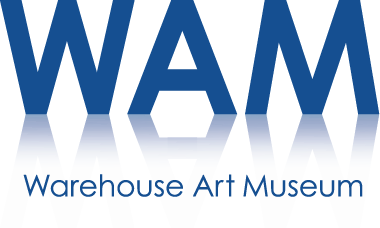With woodcuts, paper constructions, and colorful etchings all accompanied by poems, Rachel Durfee’s work blurs the line between the visual and literary arts. This week on Inside The Warehouse Rachel Durfee provides insight into her artistic practice, her connection to the natural world, and the inspiration behind her piece “The Four Corners” that was featured in the On the Nature of Wisconsin exhibition.
Rachel Durfee, "The Four Corners" (2009) Woodcut with watercolor
“There is an otherworldliness to waking up in a tent to the sounds of wind, waves or rain and smelling the freshness of morning earth. I have been camping since the tender age of five months. My childhood is punctuated by memories of camping and time spent in the woods. Through my work as an artist and poet, I explore our interdependent relationship with nature and call us to care for the earth that sustains us.
A large part of our stewardship of the earth is linked to sustainable design and management of the built environment. Before moving to Wisconsin, I worked for a landscape architecture and land planning firm in the Washington, DC area. Armed with a Bachelor of Fine Arts degree from Cornell University, I secured a job making presentation drawings and plans for new residential subdivisions, golf course resorts, commercial buildings and parking lots. This time making presentation drawings influenced my thinking about the social and environmental implications of land use and has had an impact on my later works of art.
A clear example of how my land use design experience has influenced my artwork can be seen in my piece, The Four Corners, in the On the Nature of Wisconsin exhibit. In my woodcut print, which is hand-colored with watercolors, the built environment is personalized – with a dash of wit. The land takes on the form of a human body, while the arteries and veins serve as highways and roads stretching across the body. There is an airport in the head, a golf course made of cells and a swamp in the armpit. The heart is a map of Washington, DC, with the Potomac River, the National Mall and the Pentagon. The heart not only represents my time living in the DC area, but also the heart of the land use policy-making mechanisms of this country. In 1991, I moved to Madison, WI to pursue my Master of Fine Arts degree in printmaking at the University of Wisconsin-Madison and have lived in Madison ever since. Madison, with its beloved and vulnerable chain of lakes, is located in the bladder region of the map.
The Four Corners features a grid of lines which represent latitude and longitude. In a map, the latitudinal and longitudinal lines provide a reference system for the topography. They represent our desire to impose structure and control over the landscape from which to pinpoint existence. However, topography, like the entire natural world, is unrestrained and does not conform to our efforts of defined order.
Every square inch of land in this map is filled. This is indicative of the greed and callousness we extend toward land use. We use and abuse land until we reach the edges or limits of possible development. In this case, the limiting factor is the water. On the personal level, we also use up our resources, our time and our energy until we hit whatever limits are set in our paths. The four cardinal directions on the compass rose are indicated with the letters P, A, I and X, which spell “Peace” in French. Peace has been thrown to the four corners of existence, threatening our well-being and the well-being of the environment.
The Four Corners ultimately begs the question, “What it would it look like to live in a sustainable and satisfying peace with the environment, with ourselves and with each other?”
-Rachel Durfee


